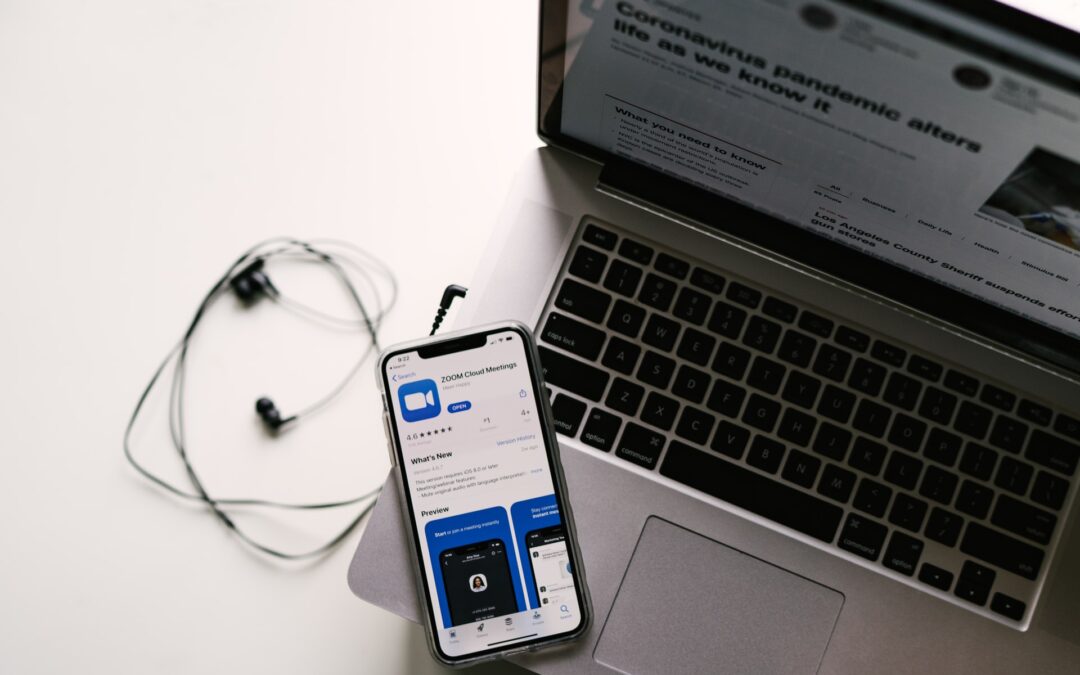Virtual meetings are the new normal for people around the globe. Over the past few months, our team has learned a lot about preparing and executing a successful online conference call. Here’s the most important thing to remember:
Be yourself! Showing people grace, keeping it casual, and being real with your attendees is far more impactful in the long run (even if you stumble during the meeting).
That being said, a little prep can help keep things on track for a smoother meeting.
1. Organize and prepare.
This step is crucial to the success of any presentation. Having a set plan helps keep people engaged, accomplishes the items on your list, and helps keep discussion on-topic and relevant. Email your outline beforehand so they can email back any additional topics to discuss during the call.
2. Do a dry run of your presentation.
Practice makes perfect. Practice your presentation beforehand by having someone play buyer and go through it so you can polish our presentation skills. It’s a good idea to think ahead about how you present your product and show off its benefits.
3. Anticipate questions.
Anticipate what types of questions you might be asked and prepare for them. It helps to jot down those questions and prepare an answer beforehand.
4. Good lighting makes a massive difference.
Avoid shooting against the light. Instead, move to an area where you are facing the light source or make use of lamps or ring lights placed slightly above eye-level for a good angle.
If other people in the call are using video, it’s good practice to turn on your video unless you have a good reason not to (e.g. If it slows down your connection).
5. Dress appropriately and use a backdrop.
We’ve all heard work-from-home horror stories. Just because you’re working-from-home doesn’t mean you don’t have to dress for the meeting.
Sometimes, we don’t want our clients to see the clutter. A great way to hide it is to use a pre-set background or add your own like the logo of your company. It makes meetings more professional even if you’re at home.
6. Check the audio.
Move to a quieter area of your home to minimize background noises. Be sure to check the audio and video before your meeting. It’s a good idea to wear headphones to prevent feedback from your speakers, and you may need a better microphone than the laptop’s built-in one. If you have an issue with your laptop speakers, an alternative is to use your phone as the audio if your laptop doesn’t pick up sound easily.
7. Be early.
Join at least 5 to 10 minutes before the meeting starts, even earlier, if you need the time to check your video and audio settings. Keep your audio at mute before the meeting starts to avoid background noises.
8. Have a backup plan.
More than one person on the call should have the final presentation pulled up and ready to share in case of technical issues. If technical difficulties occur, a new presenter needs to move in fast to lead the conversation.
9. Use conferencing etiquette.
Always ask the other participants in the call if they can hear you clearly. Likewise, don’t hesitate to tell someone if you can’t hear them or if their connection is lagging.
Use the mute function when not speaking. Computers are different and pick up sound differently. If your computer is picking up the sound of someone else talking and echoing it back through to the mic on your side, it can be frustrating and makes it hard to hear the person speaking.
10. Use visuals in your call.
Whether it’s a product demonstration or a chart, visual aids help get your point across. Keep any supplemental materials short and concise. You don’t need a 100-slide PowerPoint for a short 30-minute meeting. Highlight the most important points, and ask your attendees if they would like a copy of the whole presentation sent via email after.
11. Save the Q&A for after your presentation.
Questions can sometimes derail your train of thought. If you’re presenting to prospective buyers, do your presentation first and reserve a portion of your time for a Q&A.
12. Keep meetings short.
Respect your participants’ time by keeping meetings concise and to the point.
13. Send a followup email.
Include action items, important decisions made by the participants, future discussion items, and relevant attachments, such as a link to the recorded meeting.
Key Takeaways
Meeting virtually might feel like a big shift, but if you prepare ahead of time, you’ll be poised to impress. Still, don’t sweat it if everything doesn’t go as planned. As we see into each other’s lives, be genuine and personable. We have seen this play out in amazing ways over the past few months.
Despite social distancing, the work-from-home environment has made our work relationships more personal than ever before. So, don’t worry about the friendly doggo in the background and laugh together when our kid’s pop in to say hi. This is our new normal.

